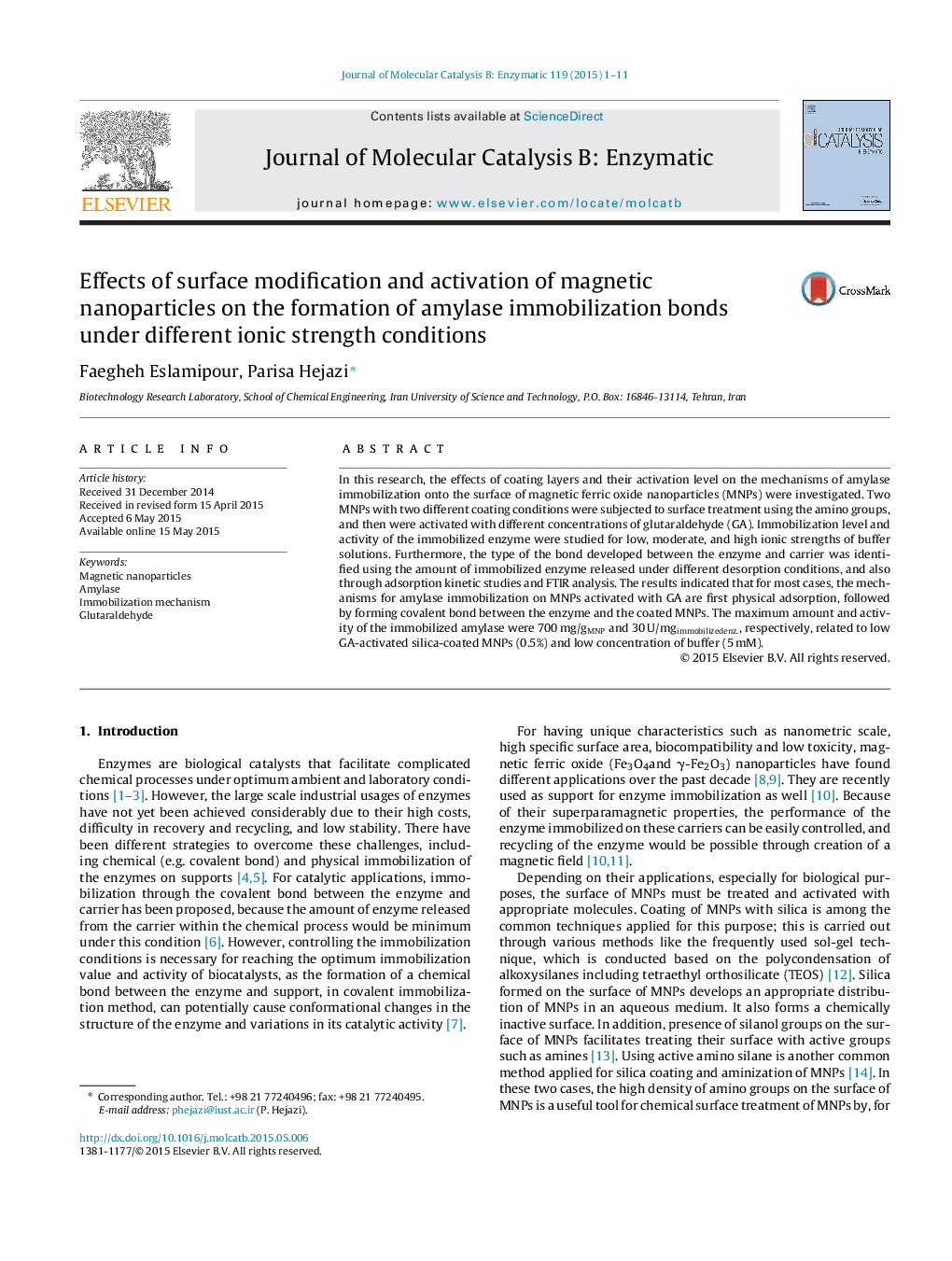| Article ID | Journal | Published Year | Pages | File Type |
|---|---|---|---|---|
| 69644 | Journal of Molecular Catalysis B: Enzymatic | 2015 | 11 Pages |
•Immobilization of Amylase on MNPs with different coating modes and activated with GA.•Investigation of effect of ionic strengths on mechanism of amylase immobilization.•Mechanism of the immobilization is combination of physical and chemical interactions.•Primary dominant mechanism in the immobilization is ion-exchange bond formation.•Covalent immobilization bonds are formed after initial formation of ion-exchange bonds.
In this research, the effects of coating layers and their activation level on the mechanisms of amylase immobilization onto the surface of magnetic ferric oxide nanoparticles (MNPs) were investigated. Two MNPs with two different coating conditions were subjected to surface treatment using the amino groups, and then were activated with different concentrations of glutaraldehyde (GA). Immobilization level and activity of the immobilized enzyme were studied for low, moderate, and high ionic strengths of buffer solutions. Furthermore, the type of the bond developed between the enzyme and carrier was identified using the amount of immobilized enzyme released under different desorption conditions, and also through adsorption kinetic studies and FTIR analysis. The results indicated that for most cases, the mechanisms for amylase immobilization on MNPs activated with GA are first physical adsorption, followed by forming covalent bond between the enzyme and the coated MNPs. The maximum amount and activity of the immobilized amylase were 700 mg/gMNP and 30 U/mgimmobilizedenz., respectively, related to low GA-activated silica-coated MNPs (0.5%) and low concentration of buffer (5 mM).
Graphical abstractFigure optionsDownload full-size imageDownload as PowerPoint slide
